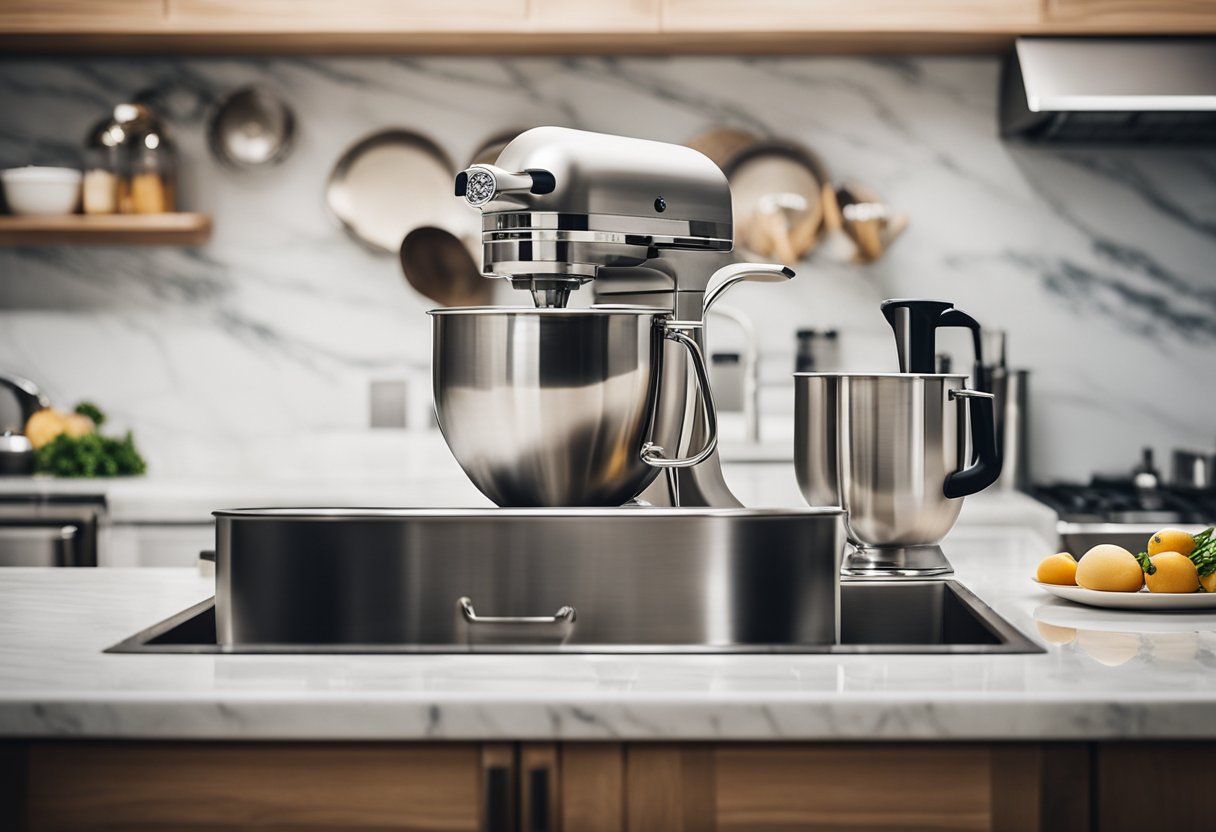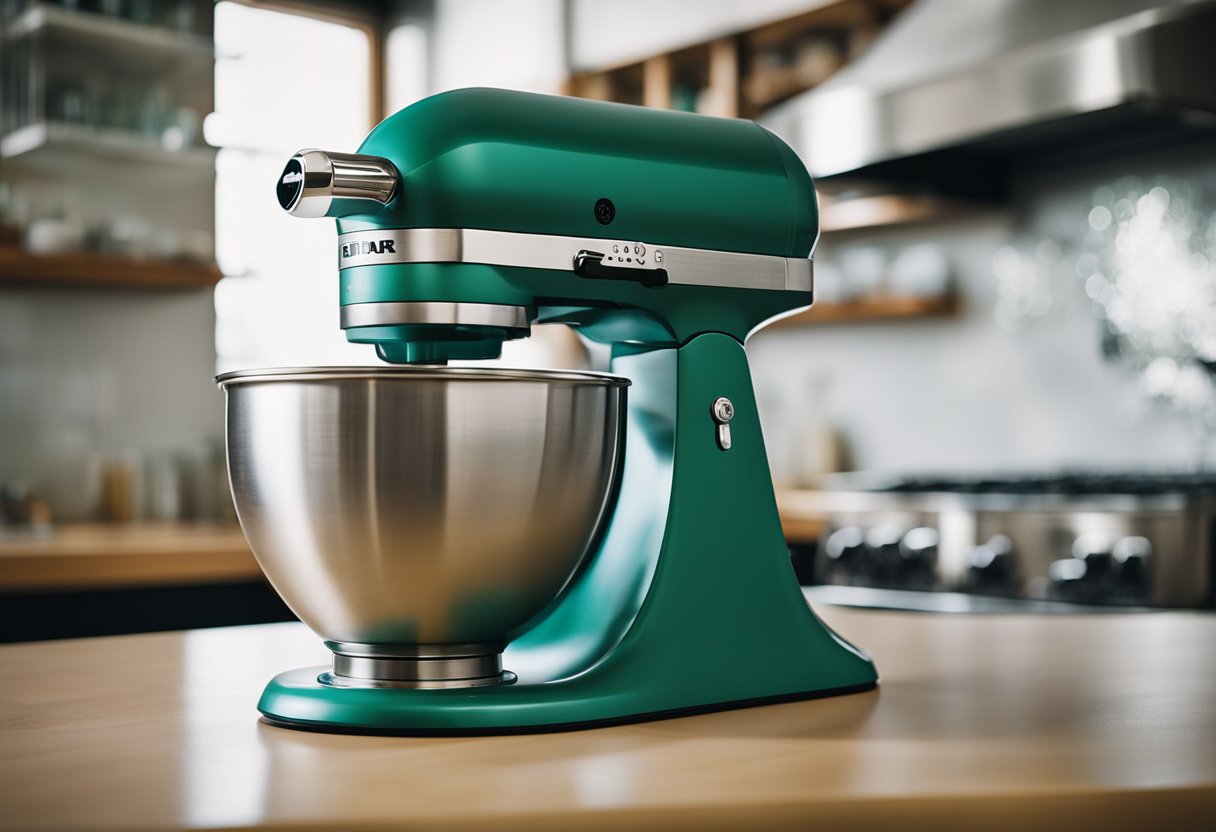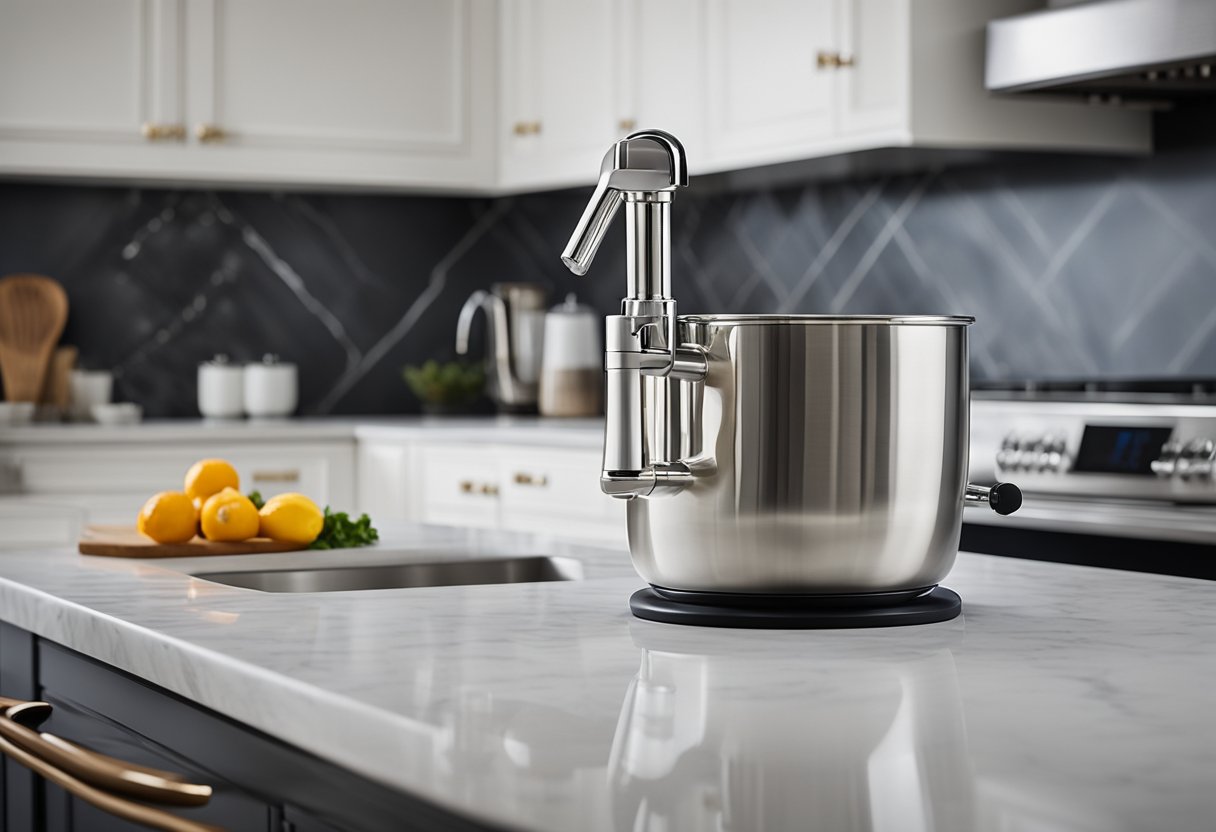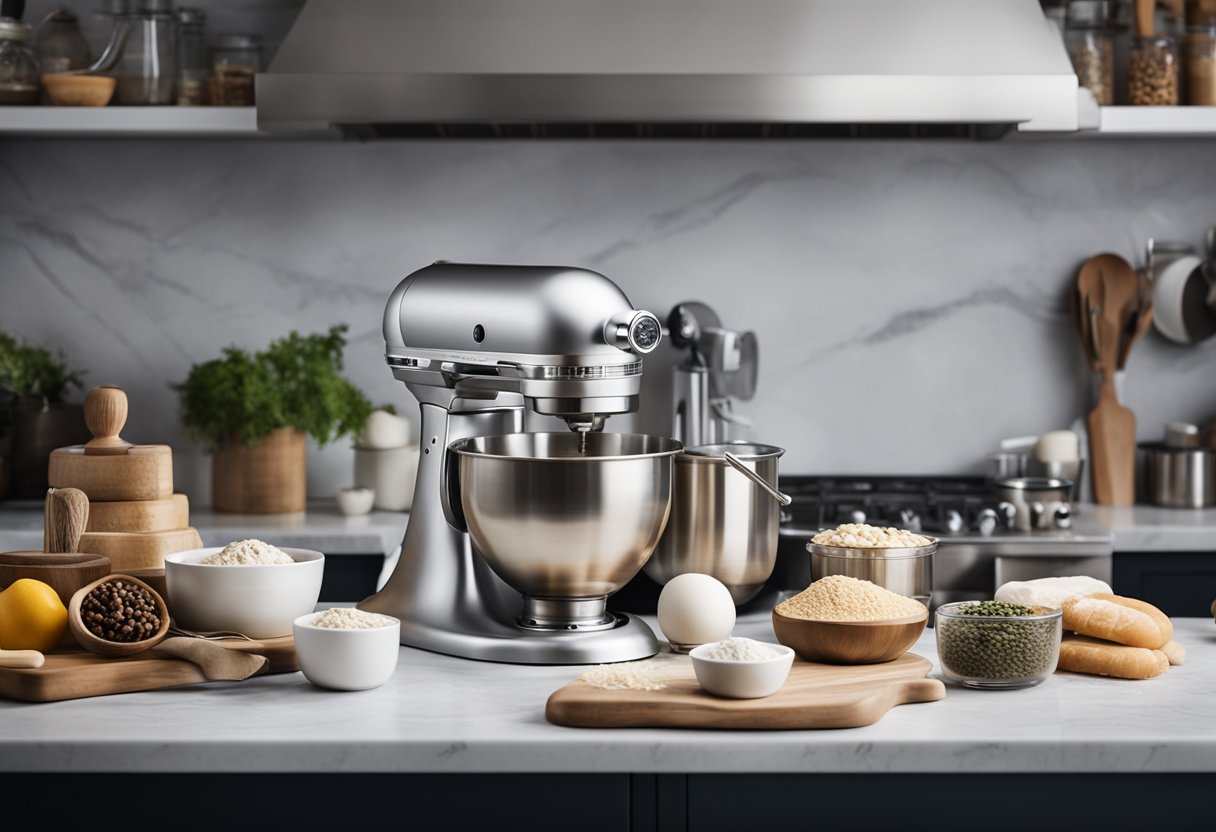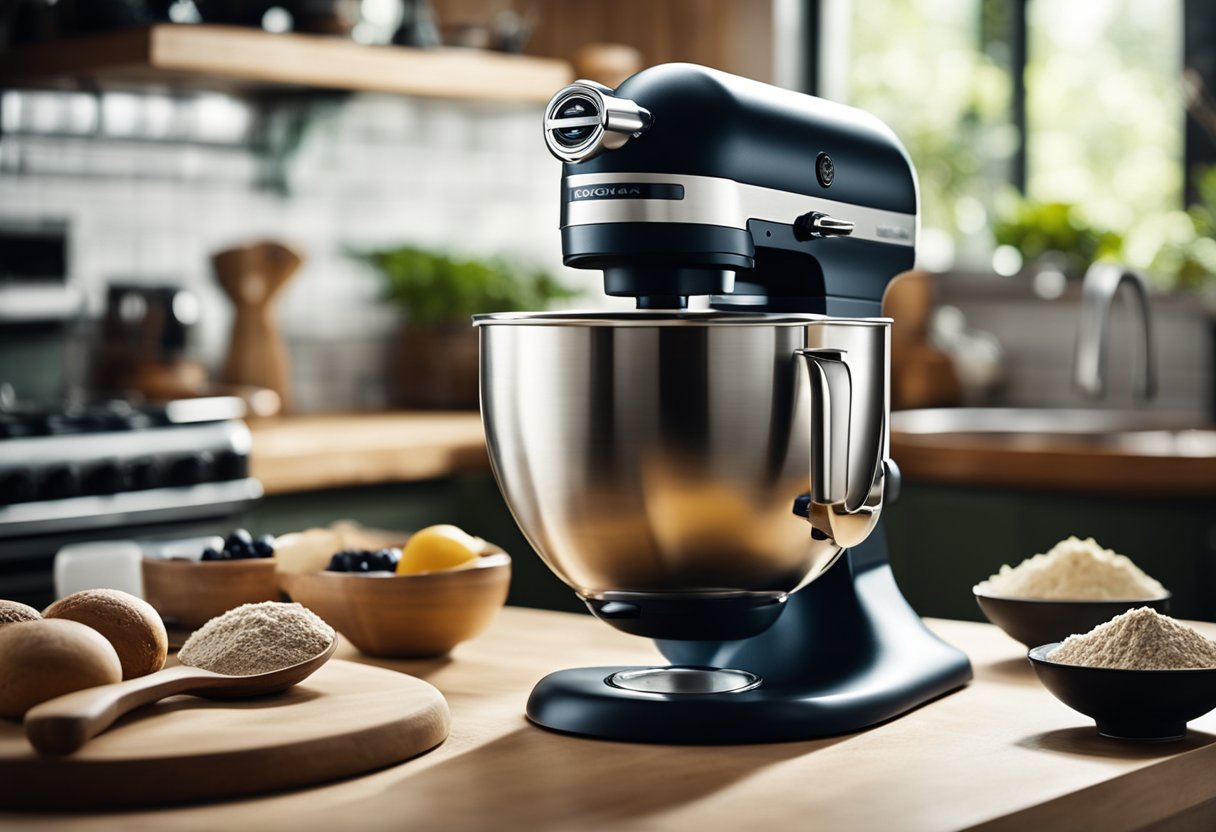Kitchen mixers are an essential tool for any home cook or professional chef. They come in a variety of types, sizes, and models, and are designed to make mixing ingredients easier and more efficient. With the right mixer, you can whip up everything from cake batter to bread dough with ease, and create a wide range of delicious dishes in no time.
One of the most important things to consider when choosing a kitchen mixer is the type of mixer that will best suit your needs. There are several types of mixers available, including stand mixers, hand mixers, and immersion blenders. Each type has its own unique features and benefits, and choosing the right one will depend on your specific needs and preferences.
When it comes to purchasing a kitchen mixer, there are several key features to consider. These may include the mixer’s size and capacity, its performance and versatility, its material and build quality, and its price and investment. By taking the time to research and compare different models, you can find a mixer that meets your needs and fits within your budget.
Key Takeaways
- Kitchen mixers come in a variety of types, sizes, and models.
- Choosing the right mixer will depend on your specific needs and preferences.
- Key features to consider when purchasing a kitchen mixer include size and capacity, performance and versatility, material and build quality, and price and investment.
Types of Kitchen Mixers
When it comes to mixing ingredients, there are several types of kitchen mixers available on the market. Each type of mixer has its own unique features, advantages, and disadvantages. In this section, we will look at the three most common types of kitchen mixers: Stand Mixers, Hand Mixers, and Planetary Mixers.
Stand Mixer
A stand mixer is a powerful and versatile kitchen appliance that is designed for heavy-duty mixing tasks. It is a freestanding appliance that features a mixing bowl, a motorized base, and a set of beaters or attachments. Stand mixers are ideal for mixing heavy doughs, making bread, whipping cream, and much more. They come in various sizes and capacities, ranging from 2 to 8 quarts.
One of the biggest advantages of a stand mixer is its hands-free operation. Once you set the bowl in place and turn on the mixer, you can walk away and let it do its job. Stand mixers also come with a variety of attachments, such as dough hooks, beaters, and wire whisks, which make them versatile and capable of handling a wide range of tasks.
Hand Mixer
A hand mixer is a lightweight and portable kitchen appliance that is designed for light to medium-duty mixing tasks. It is a handheld appliance that features a set of beaters or attachments and a motorized base. Hand mixers are ideal for mixing cake batter, whipping cream, and other light to medium-duty tasks. They come in various sizes and wattage, ranging from 150 to 250 watts.
One of the biggest advantages of a hand mixer is its portability. You can use it anywhere in the kitchen, and it doesn’t take up much space. Hand mixers are also easy to clean and store. However, they are not as powerful as stand mixers, and they are not ideal for heavy-duty tasks.
Planetary Mixers
Planetary mixers are commercial-grade mixers that are designed for heavy-duty mixing tasks. They are ideal for mixing large quantities of dough, making bread, and other heavy-duty tasks. Planetary mixers feature a large mixing bowl, a motorized base, and a set of beaters or attachments. They come in various sizes and capacities, ranging from 5 to 80 quarts.
One of the biggest advantages of a planetary mixer is its power and capacity. It can handle large quantities of dough and other ingredients with ease. Planetary mixers also come with a variety of attachments, such as dough hooks, beaters, and wire whisks, which make them versatile and capable of handling a wide range of tasks. However, they are not suitable for small kitchens, and they are quite expensive.
Key Features to Consider
When selecting a kitchen mixer, several key features should be taken into account to ensure it meets the specific needs of the user. These features include power, capacity, attachments, and design.
Power
The power of a kitchen mixer is crucial for efficient mixing, kneading, and blending. Higher wattage generally indicates a more powerful motor, capable of handling heavier doughs and batters. It is important to consider the intended use of the mixer to determine the appropriate power level.
Capacity
The capacity of the mixing bowl is an essential consideration. For larger batches and heavy-duty mixing, a bowl with a higher capacity is necessary. Bowl-lift stand mixers often offer larger capacities, while tilt-head designs are more suitable for smaller quantities.
Attachments
The availability and variety of attachments are significant factors in choosing a kitchen mixer. Different attachments enable diverse functionalities such as pasta making, meat grinding, and vegetable slicing. Understanding the range of attachments available can help determine the versatility of the mixer.
Design
The design of the mixer, whether it is a tilt-head or bowl-lift stand mixer, impacts its usability and convenience. Tilt-head mixers are generally more compact and accessible for adding ingredients, while bowl-lift mixers are preferred for heavy-duty tasks and larger batches. Considering the available space and intended use can aid in selecting the appropriate design for the kitchen mixer.
Popular Brands and Models
When it comes to kitchen mixers, there are several popular brands and models to choose from. Here are some of the most well-known and trusted brands:
KitchenAid
KitchenAid is one of the most popular brands of kitchen mixers. They offer a wide range of models, from the classic tilt-head design to the more advanced bowl-lift models. KitchenAid mixers are known for their durability and versatility, making them a favorite among professional chefs and home cooks alike. Some of the most popular KitchenAid models include the Artisan Series, Pro 600 Series, and Commercial Series.
Cuisinart
Cuisinart is a well-known brand in the world of kitchen appliances, and their mixers are no exception. Cuisinart mixers come in a variety of sizes and styles, from hand mixers to stand mixers. They are known for their powerful motors and user-friendly designs. Some of the most popular Cuisinart models include the Power Advantage Plus 9-Speed Hand Mixer and the Precision Master 5.5-Quart Stand Mixer.
Hamilton Beach
Hamilton Beach is another popular brand of kitchen mixers. They offer a range of models, from basic hand mixers to more advanced stand mixers. Hamilton Beach mixers are known for their affordability and ease of use. Some of the most popular Hamilton Beach models include the 6-Speed Hand Mixer and the Eclectrics All-Metal Stand Mixer.
Kenmore
Kenmore is a trusted brand in the world of kitchen appliances, and their mixers are no exception. Kenmore mixers come in a variety of sizes and styles, from hand mixers to stand mixers. They are known for their durability and affordability. Some of the most popular Kenmore models include the Elite 5-Quart Stand Mixer and the Elite 9-Speed Hand Mixer.
Overall, there are many great brands and models of kitchen mixers to choose from. Whether you are a professional chef or a home cook, there is a mixer out there that will meet your needs and budget.
Mixing Attachments and Accessories
When it comes to enhancing the functionality of a kitchen mixer, having the right mixing attachments and accessories is essential. These accessories can expand the capabilities of the mixer, allowing users to explore various culinary techniques and recipes.
Dough Hook
The dough hook is a pivotal attachment for kneading bread dough effortlessly. It mimics the hand-kneading process, ensuring the dough is properly mixed and kneaded to achieve the desired consistency.
Flat Beater
The flat beater is a versatile attachment that excels in mixing cake batters, cookie doughs, and mashing potatoes. Its flat, paddle-like design ensures thorough mixing without incorporating too much air into the mixture.
Wire Whip
The wire whip, also known as the whisk attachment, is ideal for aerating mixtures, whipping cream, and creating light, fluffy textures in batters and icings. Its wire design efficiently incorporates air into the ingredients, resulting in a smooth and airy texture.
Whisk
Similar to the wire whip, the whisk attachment is designed for whipping and aerating ingredients. It is particularly useful for creating meringues, mousses, and other light and airy desserts.
Additional Attachments
In addition to the essential mixing attachments, there are various other attachments available, such as spiralizers for creating vegetable noodles and pasta makers for crafting homemade pasta. These additional attachments further expand the versatility of the kitchen mixer, allowing users to explore a wide range of culinary creations.
Material and Build Quality
When it comes to kitchen mixers, the material and build quality are important factors to consider. A mixer made of high-quality materials is more durable and long-lasting, making it a worthwhile investment. Two of the most common materials used in kitchen mixers are stainless steel and glass.
Stainless Steel
Stainless steel is a popular material used in kitchen mixers due to its durability and resistance to rust and corrosion. It is also easy to clean and maintain, making it a practical choice for busy kitchens. Many high-end mixers are made of stainless steel, which not only looks sleek and modern but also adds to the mixer’s overall sturdiness.
Glass
Glass is another material used in kitchen mixers, particularly in the mixing bowl. Glass mixing bowls are non-reactive, meaning they won’t affect the taste of the food being mixed. They are also easy to clean and can be put in the dishwasher. However, glass is not as durable as stainless steel and can break or chip if dropped or mishandled.
Overall, both stainless steel and glass are good choices for kitchen mixers, and the choice ultimately depends on personal preference and needs. A mixer with a stainless steel body and a glass mixing bowl is a great option for those who want the best of both worlds.
Performance and Versatility
A kitchen mixer is a versatile tool that can perform various tasks. The performance and versatility of a kitchen mixer depend on its power, speed, and attachments. A good kitchen mixer should be able to knead dough, whip cream, and mix large batches of ingredients with ease.
Kneading
Kneading is a crucial task for a kitchen mixer, especially for those who love to bake. A good kitchen mixer should be able to knead dough evenly and thoroughly. The kneading process requires a lot of power and a slow speed to develop gluten in the dough. A powerful motor with at least 500 watts and a slow speed setting is ideal for kneading dough. A dough hook attachment is also necessary for kneading dough properly.
Whipping
Whipping is another important task for a kitchen mixer. It is used to incorporate air into ingredients like cream, egg whites, and butter. A good kitchen mixer should be able to whip ingredients to the desired consistency. A mixer with at least 250 watts of power and multiple speed settings is ideal for whipping. A whisk attachment is also necessary for whipping cream and egg whites.
Mixing Large Batches
A kitchen mixer should be able to mix large batches of ingredients with ease. A large capacity bowl with at least 5 quarts is ideal for mixing large batches. A high-power motor with at least 500 watts is also necessary for mixing large batches of ingredients. A mixer with a planetary mixing action is also beneficial for mixing large batches as it ensures that all ingredients are thoroughly mixed.
In conclusion, a good kitchen mixer should have a powerful motor, multiple speed settings, and various attachments to perform various tasks. Kneading, whipping, and mixing large batches are some of the essential tasks a kitchen mixer should be able to perform.
Specific Uses and Applications
Baking
A kitchen mixer is an essential tool for baking enthusiasts. It can be used to mix, knead, and whip ingredients with ease. One of the most common uses of a mixer is to mix bread dough. A mixer can handle the tough job of kneading the dough, saving time and effort. It can also be used to mix cookie dough, ensuring that all the ingredients are evenly distributed.
When it comes to baking, egg whites are a common ingredient used in many recipes. A mixer can whip egg whites into stiff peaks, which is necessary for making meringues, soufflés, and other baked goods.
Cooking
A kitchen mixer is not just limited to baking; it can also be used for cooking. For example, a mixer can be used to mix meatloaf, ensuring that all the ingredients are well combined. It can also be used to make mashed potatoes, ensuring that they are smooth and creamy.
In addition to cooking, a mixer can also be used to make homemade pasta. With the right attachment, a mixer can knead the pasta dough and roll it out into thin sheets, making the process much easier and faster.
Overall, a kitchen mixer is a versatile tool that can be used for a variety of purposes. Whether you’re baking bread, making mashed potatoes, or whipping egg whites, a mixer can make the process faster and easier.
Size and Capacity
Kitchen mixers come in various sizes and capacities to cater to different needs. In this section, we will discuss the most common sizes and capacities of stand mixers.
Mini Stand Mixer
Mini stand mixers are a great option for those with limited counter space or those who don’t need to mix large quantities of ingredients. They usually have a capacity of around 2 to 3.5 quarts, making them suitable for small batches of dough, batter, or frosting. Mini stand mixers are also lightweight and easy to store, making them a popular choice for those living in apartments or small homes.
KitchenAid offers a mini stand mixer with a 3.5-quart capacity that is perfect for small kitchens. It comes with a flat beater, wire whip, and dough hook, making it versatile enough to handle a variety of recipes.
Large Capacity Mixers
For those who frequently bake or cook for large groups, a large capacity mixer is a must-have. These mixers usually have a capacity of around 5 to 8 quarts, making them ideal for making large batches of dough, batter, or frosting. They also come with powerful motors that can handle heavy-duty mixing tasks with ease.
KitchenAid offers a range of large capacity mixers, including the 5-quart Artisan Series mixer and the 6-quart Professional 600 Series mixer. These mixers come with a variety of attachments, including a flat beater, wire whip, and dough hook, making them versatile enough to handle any recipe.
When choosing a mixer, it’s important to consider your needs and the amount of counter space you have available. A mini stand mixer may be perfect for those with limited space, while a large capacity mixer is ideal for those who frequently cook or bake for large groups.
Price and Investment
Investing in a kitchen mixer can be a worthwhile expense for both professional bakers and home cooks alike. However, the cost of a mixer can vary greatly depending on the brand, size, and features. In this section, we will explore budget-friendly options and professional-grade mixers to help you make an informed decision.
Budget-Friendly Options
For those on a tight budget, there are several affordable options available. Hand mixers are a popular choice and can cost as little as $25. These mixers are lightweight, easy to store, and can handle most basic mixing tasks. However, they may not be suitable for heavy-duty baking or making large batches of dough.
Another budget-friendly option is a tilt-head stand mixer. These mixers typically range from $100 to $300 and come with a variety of attachments, including a whisk, paddle, and dough hook. They are ideal for home cooks who enjoy baking but don’t need a professional-grade mixer.
Professional Grade
Professional-grade mixers are designed for heavy-duty use and can handle large batches of dough and other ingredients. These mixers typically come with a high price tag, ranging from $300 to over $1000. However, they are built to last and can handle the demands of a busy bakery or restaurant.
One popular professional-grade mixer is the KitchenAid Pro 600 Series 6-Quart Bowl-Lift Stand Mixer [1]. It features a powerful motor, a large capacity bowl, and a variety of attachments, making it a versatile tool in the kitchen. Another option is the Cuisinart SM-50TQ Stand Mixer [2], which boasts a powerful motor and a 5.5-quart bowl.
When considering a professional-grade mixer, it’s important to think about your specific needs. If you’re a professional baker or frequently make large batches of dough, investing in a high-quality mixer may be worth the expense. However, for the average home cook, a budget-friendly option may be more suitable.
Purchasing Tips
Shopping Considerations
When shopping for a kitchen mixer, it is important to consider certain factors to ensure that you get the right product for your needs. Here are some tips to help you make an informed decision:
-
Type of mixer: There are two main types of mixers: stand mixers and hand mixers. Stand mixers are larger and more powerful, while hand mixers are smaller and more portable. Consider which type will best suit your needs.
-
Power and speed: Look for a mixer with a powerful motor and multiple speed settings. This will allow you to mix a variety of ingredients, from light batters to heavy doughs.
-
Attachments: Check what attachments come with the mixer. Some mixers come with a variety of attachments, such as dough hooks and whisks, while others only come with a few basic attachments.
-
Brand and warranty: Consider the brand and warranty of the mixer. Look for a reputable brand with a good warranty to ensure that you are getting a quality product that will last for years.
Handling Orders
Once you have decided on the mixer you want to purchase, it is important to handle the order properly to ensure a smooth transaction. Here are some tips to help you:
-
Check the seller: Make sure that you are buying from a reputable seller. Check their reviews and ratings to ensure that they have a good track record.
-
Check the price: Compare prices from different sellers to ensure that you are getting a good deal. However, be wary of prices that are too good to be true, as they may be a sign of a scam.
-
Check the shipping: Check the shipping options and costs before placing your order. Make sure that the seller offers a shipping option that is convenient for you and that the cost is reasonable.
-
Check the return policy: Check the seller’s return policy before placing your order. Make sure that you are comfortable with the policy and that it offers adequate protection in case the mixer is damaged or defective.
Frequently Asked Questions
What are the essential attachments for a KitchenAid mixer?
KitchenAid mixers come with a variety of attachments, but the essential ones are the flat beater, wire whip, and dough hook. These attachments are versatile and can handle most mixing tasks. Other attachments, such as the pasta maker or meat grinder, are optional and can be purchased separately based on specific needs.
How does a stand mixer compare to a hand mixer in terms of functionality?
A stand mixer is more powerful and can handle larger batches of dough or batter than a hand mixer. It also frees up the user’s hands to do other tasks while mixing. A hand mixer is more portable and easier to store but may not be able to handle heavier mixing tasks.
What features should I look for in a professional-grade kitchen mixer?
A professional-grade kitchen mixer should have a powerful motor, a large capacity bowl, and a sturdy construction. It should also have a variety of speed settings and come with essential attachments such as the flat beater, wire whip, and dough hook.
Which stand mixers offer the best value for their price?
KitchenAid mixers are known for their quality and durability and offer a good value for their price. Other brands such as Cuisinart and Hamilton Beach also offer quality stand mixers at a lower price point.
How do I decide between the KitchenAid Artisan and Professional mixers?
The KitchenAid Artisan mixer is a good choice for home cooks who want a versatile mixer that can handle most tasks. The Professional mixer is more powerful and has a larger capacity bowl, making it a better choice for those who frequently bake large batches of bread or pastry.
Are there notable differences between KitchenAid and Hamilton Beach mixers?
KitchenAid mixers are known for their quality and durability, while Hamilton Beach mixers are generally more affordable. KitchenAid mixers also come with a wider range of attachments and accessories, while Hamilton Beach mixers are more basic in their features.

